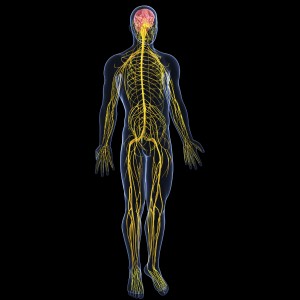Great news: the latest science suggests that types of brain trauma formerly believed irreparable can possibly be healed.
Nature Communications, an online research journal of biological and physical studies, just released a study by researchers at Imperial College London and the Hertie Institute, University of Tuebingen.
These scientists report that they may have found a way to regrow nerve fibers in the central nervous system.
The Secret: Protein PCAF
Up to now, damage to nerve fibers has always been deemed untreatable. It can result from a spinal cord injury or stroke, as well as from various types of brain trauma. It results in paralysis and loss of sensation or motor skills, which no amount of therapy or surgery can bring back.
But according to Simone Di Giovanni, an author of the study and a professor at Imperial College London’s Department of Medicine, their work with a powerful protein may have illuminated a way to regrow nerve fibers in the body’s most important command center.
It sounds like something out of X-Men: a powerful protein called P300/CBP-associated factor, or PCAF, which triggers a series of chemical and genetic events that enable damaged nerve fibers to regenerate.
This, anyway, is how the process is described by the researchers. (Leaving out the X-Men part, of course.)
Many Hurdles, New Possibilities
So far, they have been trying their theory out on mice with central nervous system damage. They found that PCAF injections significantly increased the number of nerve fibers that grew back.
Knowing that it’s at all possible for nerve fibers to regenerate is a huge step forward in itself. The next step is learning to control it.
There are many hurdles to overcome in this process. It’s not enough for the nerve fibers to simply regenerate — the real question is whether they can allow for recovery of movement and function.
Comparing Nervous Systems
It’s worth noting that nerve fibers in the central nervous system behave very differently from those in the peripheral nervous system, which controls areas outside of the brain and spinal cord. While both systems are made from the same kinds of nerve fibers, those in the peripheral nervous system seem naturally inclined to recover functionality.
 Comparing the two systems has revealed something called epigenetic mechanisms, which are at the core of a nerve fiber’s ability to self-heal. Epigenetic mechanisms are processes that activate (or deactivate) genes in response to its environment, but without messing up any DNA. They control such things as how genes influence the entrance of chronic disease in the body, such as cancer and diabetes.
Comparing the two systems has revealed something called epigenetic mechanisms, which are at the core of a nerve fiber’s ability to self-heal. Epigenetic mechanisms are processes that activate (or deactivate) genes in response to its environment, but without messing up any DNA. They control such things as how genes influence the entrance of chronic disease in the body, such as cancer and diabetes.
And when trauma occurs in the peripheral nervous system, the damaged nerve fibers signal the cell body to engage the epigenetic mechanism that initiates regrowth.
New Hope for Recovery
Dr. Radhika Puttagunta, a co-author of the study, said that understanding these specific mechanisms will help them to know if it’s possible to drive the same kind of self-healing in the central nervous system.
Di Giovanni added that if they can successfully find a way to trigger these same mechanisms in the central nervous system, they could take steps toward helping paralyzed patients recover feeling and movement. The professor told Science Daily:
“The ultimate goal could be to develop a pharmaceutical method to trigger the nerves to grow and repair and to see some level of recovery in patients. We are excited about the potential of this work.”
Contact Us
If you need legal help in a case of brain trauma or injury, the Brain Injury Law Center may be able to help. Call attorney Stephen M. Smith at (757) 244-7000 or fill out the form on this page for a no-cost, no-obligation consultation.


